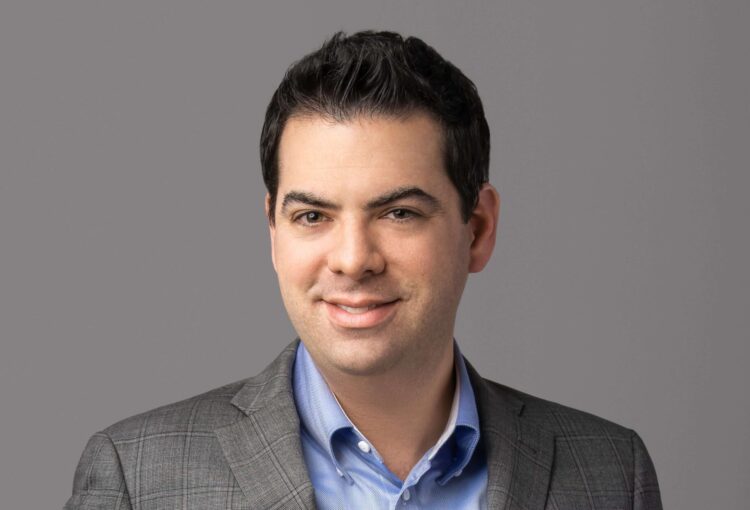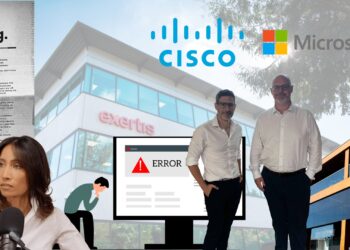CrowdStrike has revealed the four technologies it believes will make its partners the most money this year as it kicked off its EMEA Partner Symposium 2025.
The endpoint security vendor yesterday received a boost as NVIDIA announced it has integrated CrowdStrike’s Falcon Platform into its Validated Design Architecture.
Talking to IT Channel Oxygen ahead of its Budapest event – which kicks off today – Chief Business Officer Daniel Bernard characterised it as a “big moment” for the Austin-based vendor.
“They’ve published the definitive blueprint of what an AI architecture actually looks like, and the definitive technology to secure the AI era is CrowdStrike,” Bernard said.
“It’s a very strong statement and great for our ecosystem.”
CrowdStrike will use the event to highlight the four technologies it believes will bring home the bacon for partners in 2025.
This includes its next-generation SIEM product and Falcon Cloud Security, which Bernard said is designed to help customers “consolidate the alphabet soup of various point product cloud security vendors”.
Bernard highlighted CrowdStrike’s exposure management solution, which is designed to help customers move away from legacy vulnerability management vendors that are “kind of in stagnation”, as a third red-hot technology.
With 80% of breaches shown to involve identity in some form, CrowdStrike sees its identity security technology as the final core technology for 2025, Bernard said.
“We have 30 children in total – and we love them all – but these are the ones that are going to help them make the most money this year,” he said.
Marketplace momentum
CrowdStrike is a “partner-first” vendor, with 60% of ACV for its new platform coming from this path, Bernard stressed.
An increasing chunk of its business is generated via hyperscaler marketplaces, with CrowdStrike recently announcing it sold $1bn via AWS Marketplace in 2024 alone (having taken over six years to reach its first $1bn through the platform).
Presidio last month became the first reseller to publicly announce it had generated over $1bn sales via AWS Marketplace, with UK partners like Softcat, Bytes and Computacenter all busy honing their cloud marketplace strategies.
“When AWS first debuted the idea of a cloud marketplace, a lot of the ecosystem was frightened, angry or upset, and it was positioned as adversarial – an either-or,” Bernard said.
“What we’ve done with AWS and Google – and we continue to work with some of the other ones in the wings – is we talk about hyperscalers right away in the discussion, because it unlocks so much value for the customer to adopt more of our technology.
“We’ve cracked the code, and our goal is to make sure that every single person in the audience knows how to benefit. There’s no detriment – it’s all benefit from hyperscale marketplaces.”

John Taylor, VP Channels & Alliances, Europe & Israel at CrowdStrike, added: “I don’t think I go to any executive meetings with partners where we aren’t asked for advice on marketplace. We’re definitely seen as a leader in that space, and the partners are interested in terms of how they make use of that relationship.”
On the distribution front, CrowdStrike is also extending its partnership with Ignition beyond the UK and Nordics and into Benelux, France, Spain, Portugal, Italy and Greece.
“It made us stronger as a company”
After last summer’s CrowdStrike-induced Windows meltdown wiped 40% off its market cap, CrowdStrike is back in favour with Wall Street (its share price is now around a fifth higher than pre-incident).
Its revenues leapt 29% last year to reach $3.95bn.
But how much is the notorious incident – that was estimated to have affected 8.5 million Windows devices – still weighing on the minds of the CrowdStrike partners gathered today in the Hungarian capital?
“I think the only folks still talking about it are the customers praising how we responded and the partners praising how we’ve responded,” Bernard responded.
“We’ve continued to not only take the resilient steps that we said we would – and we did that ahead of our timescales – but also grow our business and do so ahead of the schedule too.
“If anything, it made us a stronger company. It brought our team closer together, it brought us closer to our customers, and it brought us closer to our partners.
“Our business has done one thing since that last summer, which is grow.”
Doug Woodburn is editor of IT Channel Oxygen

















